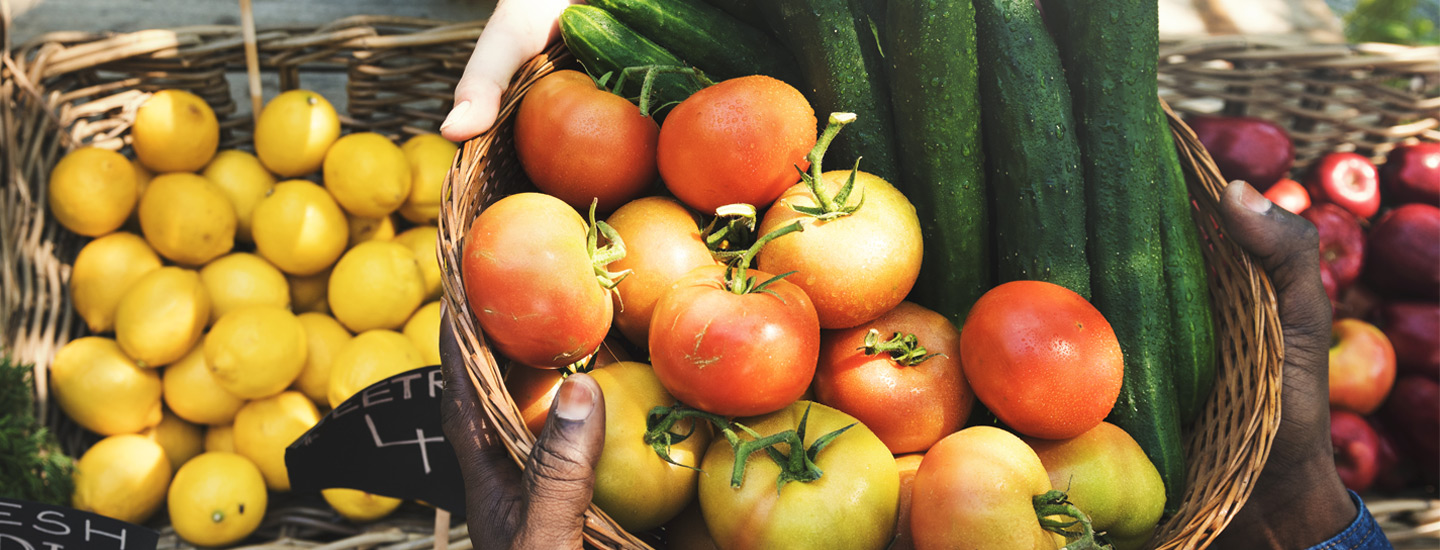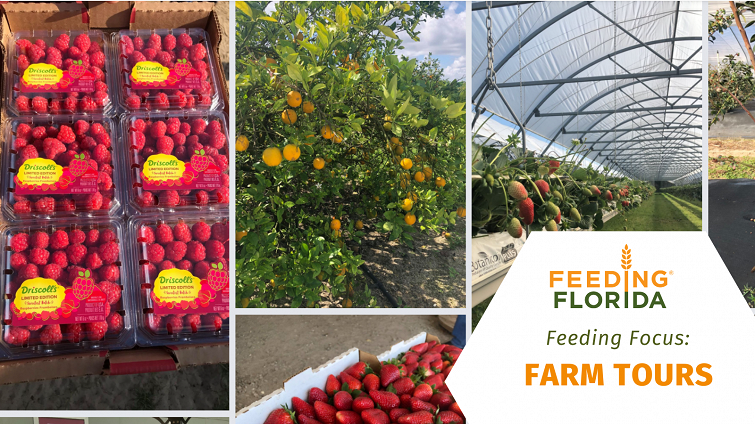TALLAHASSEE, FL (May 2021) – For the past four months, our Director of Produce Recovery, Sherri Atwell, has had the pleasure of traveling across the state with the Florida Fruit & Vegetable Association (FFVA) getting first-hand experience with growers and learning how fresh produce goes from the farm to the food bank. As a member of the current FFVA Emerging Leaders Program, Sherri’s farm tours have taken her across county lines and to a couple dozen farms in places like Plant City, West Palm Beach and Palatka.
During her tours, Sherri was able to learn more about the cultivation and production of crops such as potatoes, broccoli, strawberries, blueberries, tomatoes, peaches, citrus fruits, cabbage, cauliflower, beets, turnips and more. This experience also allowed Sherri to learn more about the different farming methods some of our Feeding Florida farmers utilize, such as hoop houses, citrus under protective screening and hydroponics.
One unique experience Sherri had during her tours was visiting the Redland Christian Migrant Association (RCMA), whose mission is to help children in migrant working and low-income families with various needs from schooling to feeding problems.
“As the FFVA Emerging Leaders class, we collected two vans full of supplies and got to present the donations in person,” said Sherri. “Feeding Florida is a gracious recipient of a grant from FFVA to help facilitate produce donations with the local food bank, Feeding Tampa Bay to support RCMA. It was a full circle moment for me as I was presented with a hand painted thank you from the kids.”
The first-hand exposure to what it’s like to be a Florida farmer and how produce makes it to the shelves of our food banks provided Sherri with a new perspective on what Feeding Florida does. These farm tours allowed her to learn about sustainable growing, efficiently packing produce and why it is so important that all Floridians have access to fresh produce.
Read more about the Florida Fruit and Vegetable Association in our Q&A, learning about their produce recovery efforts and collaboration with Farmers Feeding Florida.
See pictures and recaps from Sherri's Farm Tour in our Facebook album>>


